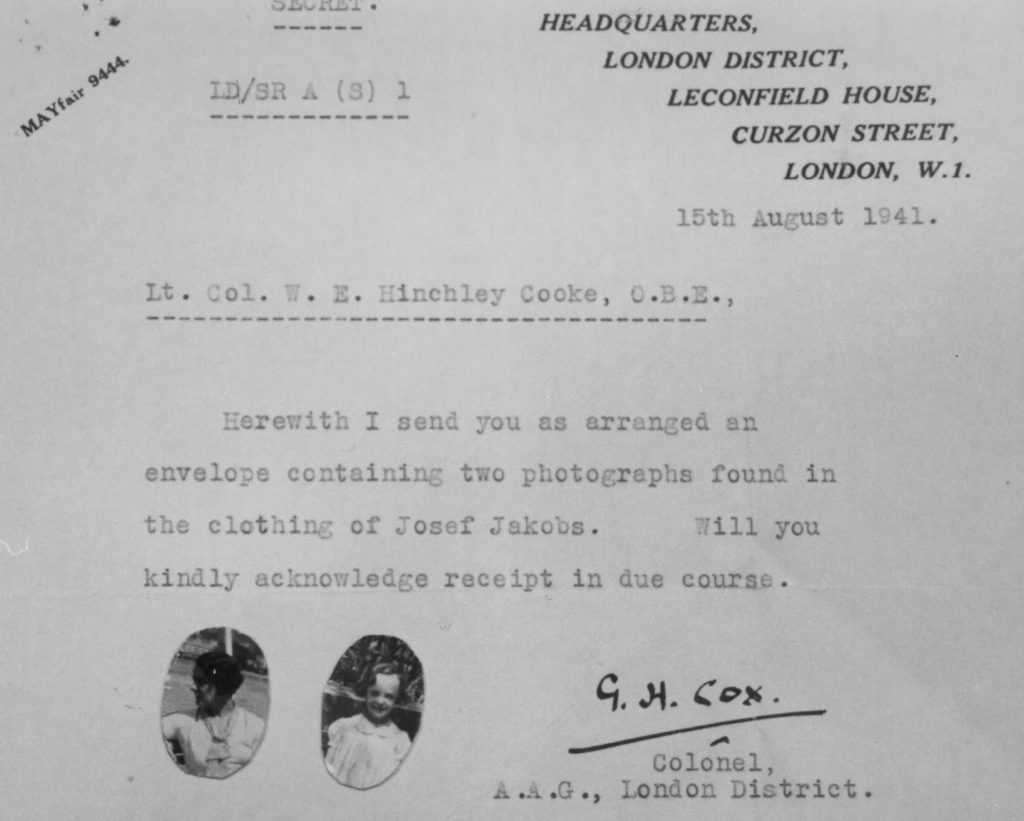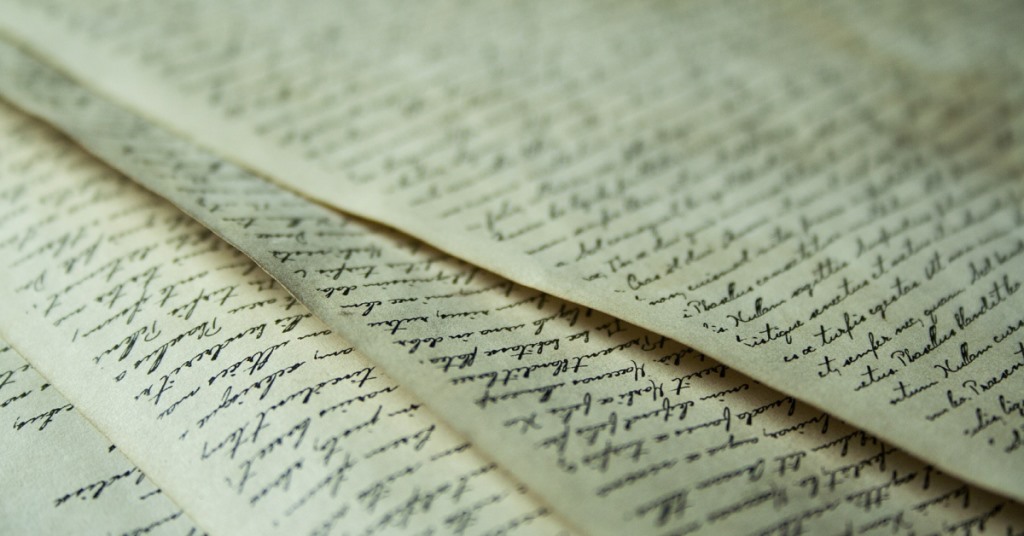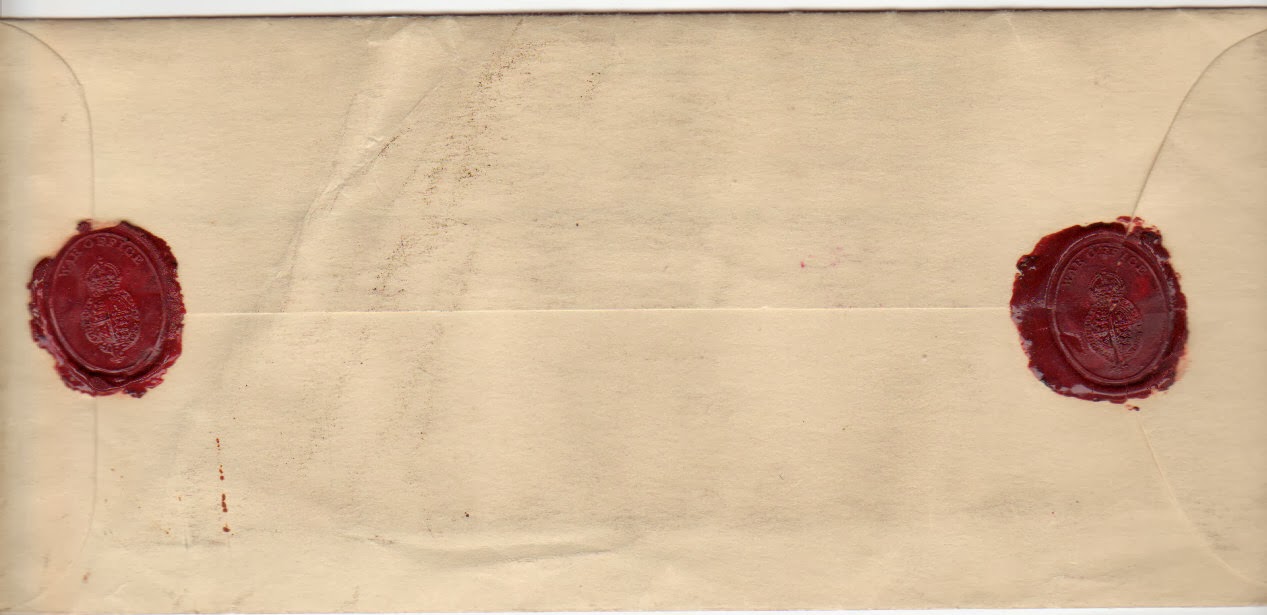In September 1940, four would-be “German” spies landed on the coast of England. The men were captured relatively quickly and in November 1940 were put on trial at the Old Bailey in London. Sjoerd Pons, a Dutchman, was acquitted and imprisoned for the remainder of the war. Of the other three, all were found guilty of espionage and sentenced to death: Carl Heinrich Meyer (Dutch); Jose Rudolf Waldberg (German) and Charles Kieboom (Dutch). In the days leading up to their executions (Meyer and Waldberg on 10 December 1940 and Kieboom on 17 December), all three wrote letters to their loved ones. All three were told that their letters would be delivered to their families at the end of the war. They never were.
The letters were kept in the MI5 files for decades, the authorities concerned that their contents could cast a poor light on British justice. In the early 2000s, the files were released to the National Archives, including the letters of the deceased spies.
Carl Meier wrote to his mother, Mrs. J. van Waltmeyer-Tamson in Maastricht and to his girlfriend Margaret.
Jose Waldberg (not his real name) wrote to his “adopted” aunt and uncle, Pierre & Raymonde Lassudry in Paris, as well as to another aunt, Sr. Antoinette Lassudry in Durbuy-les-Barvaux. His final letter was to his fiance Helene Ceuppens from Ixelles near Brussels.
Charles Kieboom wrote one letter to “Bien”, address unknown.
The letters are touching and poignant, even more so given that they were never delivered. Did the families eventually discover what happened to their sons, grandsons, boyfriends, nephews? The executions were reported in the London papers, so perhaps news trickled back to the families. But the last words of these spies, destined for their loved ones, never made it.
Farewell Letter of Josef Jakobs
Such might have been the case for Josef Jakobs as well. He too wrote a final farewell letter to his family on the eve of his execution. It was handed to Lt. Col. William Edward Hinchley-Cooke, an MI5 interrogator. Hinchley-Cooke took the letter, which was handwritten in German, back to his office and enclosed it in an envelope.
The letter was to be delivered to Jakobs’ wife, Frau Margarete Jakobs, at the cessation of hostilities. The letter was sealed with wax, imprinted with the seal of the War Office.
The envelope sat in the MI5 files for the next 52 years. In 1993, with the release of the court martial file on Josef Jakobs, the letter was finally delivered to the granddaughters of Josef Jakobs. The seal was unbroken. Unfortunately, Jakobs’ wife had passed away in 1970, preceded in 1963 and 1946 by two of Jakobs’ children. Only his youngest son was left to receive the letter and read the final words of Josef to his family.
One person read the letter before Josef’s family, Lt. Col. Hinchley-Cooke. Within the letter, Jakobs referred to the photos from a medallion which kept him company during his long captivity. Hinchley-Cooke ordered a thorough examination of the deceased’s personal effects and two tiny oval photographs were found in the clothing of Jakobs. For seven and a half months, Jakobs had kept those photographs a secret from the officers of MI5, a small, but significant act of defiance and resistance.
N.B. 2021 – my book on Josef Jakobs contains the full contents of Josef’s letter to his family.

Broken Promises
The British authorities promised Waldberg, Kieboom and Meyer that their letters would be delivered at the end of the war. The same promise was made to Josef Jakobs. Did such promises mean anything? Is it ever “too late” to receive a message from the past? The family of Josef Jakobs would say “No, it is never to late”, even 52 years after the fact. Our family is extremely grateful that we were able to receive the letter that Josef wrote on the eve of his execution.
How many other spies wrote final letters to their loved ones? Where are those letters?
Perhaps there are descendants of those three hapless “German” spies who first landed on the shores of England in September 1940. The addressees might be long deceased but perhaps someone, somewhere, would be interested in receiving a “message in a bottle” from a long-lost grand-uncle.
Letters from Jose Rudolf Waldberg
Waldberg signed his letters as Henri.
Madame Antoinette Lassudry
Institut des Filles de la Sagesse
Souer Constance du Calvair
Durbuy-les-Barvaux
Luxembourg (city is actually in Belgium)
Pierre & Raymonde Lassudry
3 rue Louis-Blanc 3
Alfortville, Paris
France
Helene Ceuppens (his fiancé)
73 Rue Marie-Henriette
Ixelles, Brussels
Belgium
Letter from Carl Meyer
Mrs. J. van Waltmeyer-Tamson
Scharnerweg 126
Maastricht
Holland
Letter from Charles Kieboom
Addressed simply to “Bien”
References
National Archives, Security Service files on the Dutch spies, KV 2/1699 & KV 2/1700.
National Archives, Security Service file on Josef Jakobs, KV 2/27.
Personal Papers.



So so sad, not just for the men executed but for their families.
Very true. Sometimes I hope that in posting this, the descendants of these men might read the post and be able to visit the National Archives and read the letters.